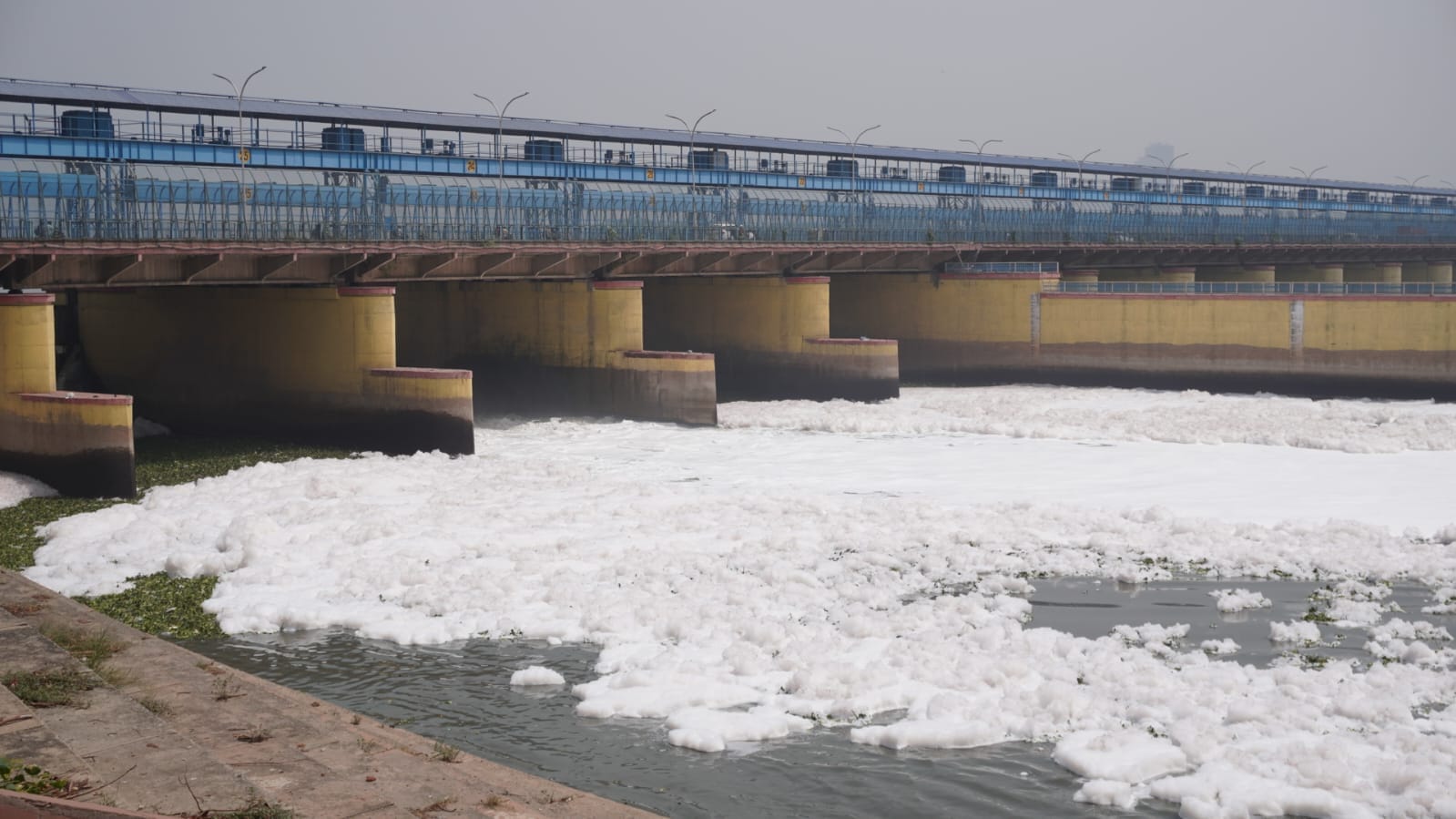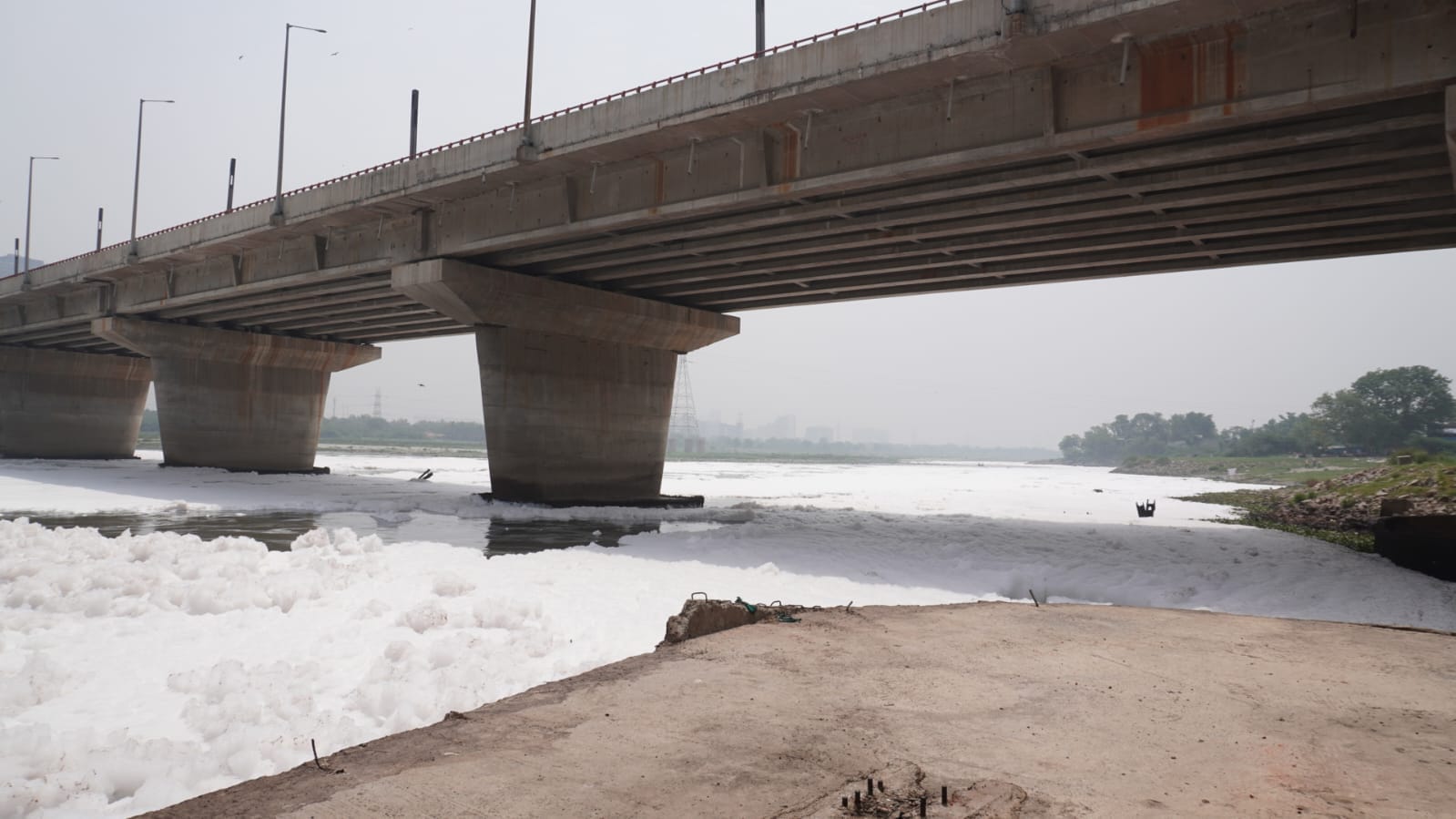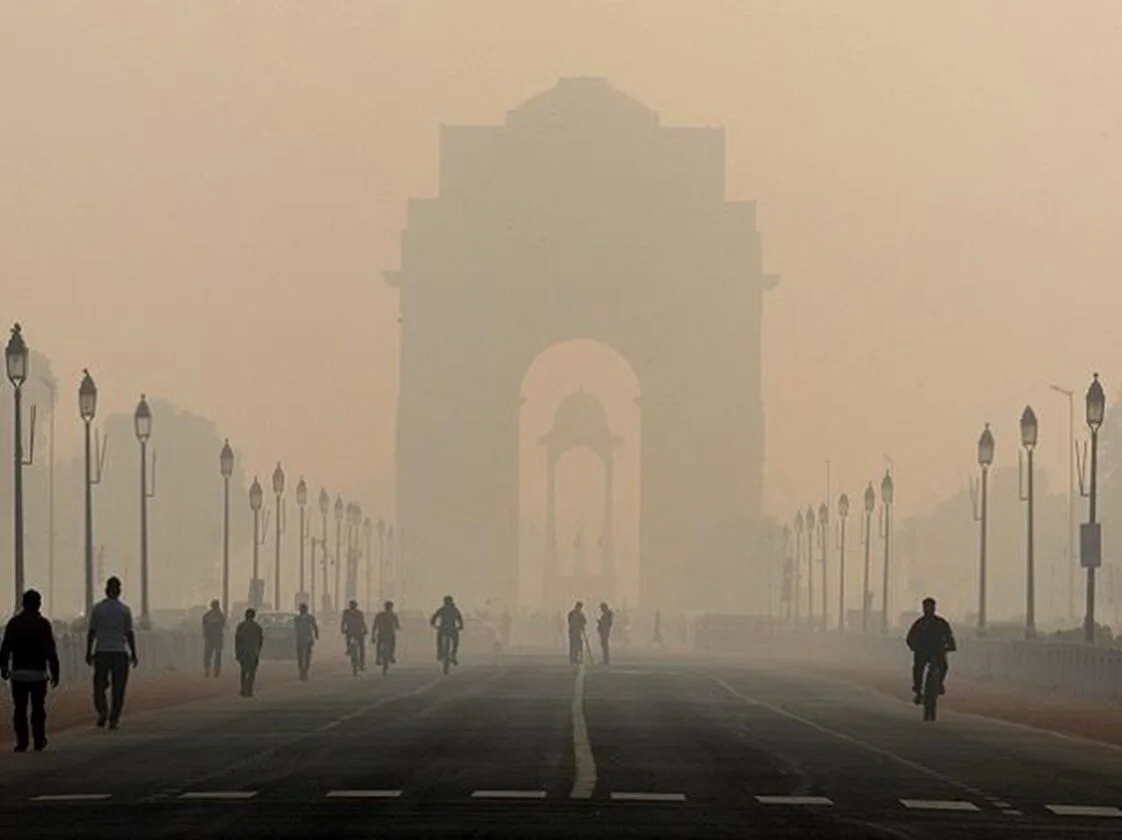As the capital prepares to mark World Environment Day on June 5, the worsening condition of the Yamuna River casts a long, toxic shadow over any celebration.
In spite of decades of cleaning initiatives, significant public spending, and strict policy statements, India’s most sacred river continues to face a severe ecological crisis.
Recently released data on pollution by the Delhi Pollution Control Committee (DPCC) reveal Biological Oxygen Demand (BOD) levels in the Yamuna have crossed alarming quantity of 127 mg/L at the Najafgarh drain, more than 40 times the acceptable limit of 3 mg/L set by the Central Pollution Control Board (CPCB). Dissolved Oxygen (DO), which is necessary for aquatic life, is nowhere to be found in patches, and the river, therefore, cannot harbor even the most rudimentary aquatic conditions.

Thick white foam of untreated sewage, industrial effluents, and phosphates in detergents is usually smothering stretches along Kalindi Kunj and is a grim visual symbol of the capital’s grime. But more than just optics, this foam consists of toxins and pathogens that are a public health threat.
For thousands of Delhi residents living beside the Yamuna, the water’s deterioration is a daily crisis. In Okhla Vihar, 42-year-old Ramsha Begum, a local street vendor, says, ‘We cannot afford water purifiers and my children are suffering from irritable bowel syndrome due to impure water. The water looks muddy and yellow, but we have no alternative other than consuming it.‘
An ecological and health crisis
Nearly 70% of the raw water consumed by Delhi originates from the Yamuna River. However, the level of faecal coliforms, which indicate the presence of human waste, has been measured at over 1.5 million MPN/100ml in parts of the river, far beyond the permissible limit of 500 MPN/100ml.
Physicians warn that contact with contaminated river water through the skin may lead to disease outbreaks such as typhoid, hepatitis A and E, and leptospirosis.
Physicians warn that contact with contaminated river water through the skin may lead to disease outbreaks such as typhoid, hepatitis A and E, and leptospirosis. Contact or inhalation of foam leads to respiratory irritation, allergy, and eye infection.
For residents residing on the banks and using the Yamuna for daily activities such as washing and periodic bathing, it is a daily and hazardous compromise.

‘I would also advise taking precautions in the form of vaccinations against hepatitis A and typhoid, particularly for those who are continuously exposed to contaminated river water‘, said Dr. Imran Ansari, a Physician by profession.
Systemic pollution and infrastructure gaps
Delhi has 37 STPs (sewage treatment plants), but less than two-thirds of them are running at their full capacity. As high as 16 STPs were found to not be adhering to necessary discharge standards in 2025. Many more have weak disinfection systems, and therefore partially treated or untreated sewage still makes its way into the river via 18 major drains, the Najafgarh and Shahdara drains being most prominent, which account for over 80% of the pollution load, said the Magsaysay Award winning environmentalist & water and conservationist Dr Rajendra Singh. ‘Don’t say Yamuna has water – it only has acid,‘ he said.
‘The river now carries heavy metals like chromium, rising nitrate levels, and extremely high acidity. Due to climate change and extreme temperatures, these chemicals react further, creating white foam, which is very harmful – it is acidic and corrosive waste‘ he added.
Approximately 700 million gallons per day (MGD) of untreated sewage is estimated to flow into the river.
Approximately 700 million gallons per day (MGD) of untreated sewage is estimated to flow into the river. Adding to this are crumbling infrastructure, unauthorised industrial hook-ups, and a sewerage system that still excludes much of the poor settlements.
Government action and accountability regarding the pollution of Yamuna
Along with the 2025-26 budget, the government of Delhi set aside ₹500 crore for rejuvenating the Yamuna alone. This includes the installation of 40 decentralised mini-STPs, repairing corroded pipes, and connecting over 2.5 lakh homes and slums to the city’s sewer network. In addition, 32 water quality monitoring stations are being installed for real-time monitoring so that surges in pollution can be detected and action can be taken sooner.

At the overall level, the Jal Shakti Ministry has established a graded “Yamuna Action Plan” with interception of drains as one of the objectives, removal of solid waste, riverfront development, and ecological rejuvenation. The target is to improve water quality in 2027, but its implementation timeframe is not defined, and earlier iterations of the same schemes have failed to deliver lasting results.
Political leadership continues to pass the buck. The early 2025-elected new government has been under mounting criticism for being perceived as doing nothing. Although it presents a collaborative approach with central governments through a new ‘Yamuna Master Plan,’ critics say its ground interventions remain few and between. Public patience is wearing out as promises accumulate but progress is difficult to measure.
While BJP spokespersons refused to comment on repeated queries, AAP spokesperson, Sanjay, said ‘When AAP was in power, the Yamuna was not in this terrible shape. BJP won by hyping promises around Yamuna revival. But what did they do? Nothing. Were 100 days not enough to begin serious work?‘
The 2024 data from the Central Pollution Control Board estimated that more than 20,000 Delhi families residing in unauthorised colonies still rely on untreated river water for washing, bathing, or even modest cooking requirements. With no alternative infrastructure, their residents have limited options and suffer long-term implications for public health and social stability.
Delhi’s water crisis is a microcosm of larger challenges faced by Indian cities grappling with urbanisation, inadequate planning, and strained resources. The Yamuna’s condition parallels that of other urban rivers like the Hindon in Uttar Pradesh and the Musi in Telangana, once-lifelines now reduced to drains for industrial and domestic waste.
Experts warn that if Delhi, with all its media attention, resources, and policy focus, is unable to revive its river, then the chances for smaller or lesser known water bodies are bleak. The inability to revive the Yamuna reflects the wider disconnect between environmental desire and institutional capacity in India.
The inability to revive the Yamuna reflects the wider disconnect between environmental desire and institutional capacity in India.
Micro-interventions such as fitting flow meters at drain outlets, third-party audits of STPs, and stricter compliance with pollution norms are needed. Citizens must also be engaged in the sense of reporting abuses and halting encroachments.

While vital, ecological flow is often ignored. Specialists recommend barrages in upstream zones to supply a minimum of 1,000 cusecs of freshwater daily, especially between summer months, to dilute toxins and preserve natural cleansing cycles.
Furthermore, public awareness campaigns must be intensified, particularly within river-bordering areas, to detect risks and spread protective information. Civil society organisations and NGOs can become key in translating policy into grassroots action.
On this World Environment Day, the Yamuna’s dismal condition invites both lament and introspection. It is a social, political, as well as moral, rather than just an environmental, failure. From its sacred, life-giving status as a watercourse, the Yamuna has sunk to the level of an open sewer, choked with neglect, complacency, and unaccountability.
The revamp of the Yamuna will not be possible on the basis of budgets. It will demand dedicated action, inter-agency coordination, and civic responsibility. For a city that prides itself on development, the final examination of its growth may perhaps be that of its river.
Until then, the Yamuna still flows-polluted, foaming, and forgotten.





